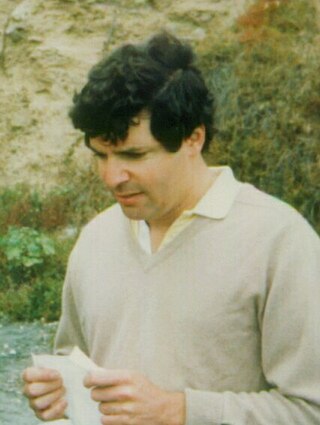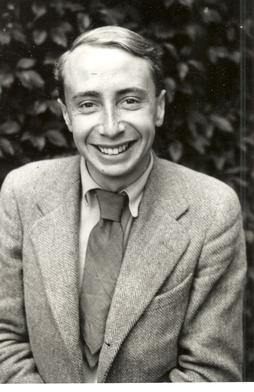
Lee, Pascal. "N~1: Alone in the Milky Way – Kalamazoo Astronomical Society". YouTube. Archived from the original on 15 March 2021.

An integrated circuit is a set of electronic circuits on one small flat piece of semiconductor material, usually silicon. Large numbers of miniaturized transistors and other electronic components are integrated together on the chip. This results in circuits that are orders of magnitude smaller, faster, and less expensive than those constructed of discrete components, allowing a large transistor count.
Transistor–transistor logic (TTL) is a logic family built from bipolar junction transistors. Its name signifies that transistors perform both the logic function and the amplifying function, as opposed to earlier resistor–transistor logic (RTL) and diode–transistor logic (DTL).

Frank Donald Drake was an American astrophysicist and astrobiologist.

Ibuprofen is a nonsteroidal anti-inflammatory drug (NSAID) that is used to relieve pain, fever, and inflammation. This includes painful menstrual periods, migraines, and rheumatoid arthritis. It may also be used to close a patent ductus arteriosus in a premature baby. It can be used orally or intravenously. It typically begins working within an hour.
The year 1908 in science and technology involved some significant events, listed below.
The year 1959 in science and technology involved some significant events, listed below.
The year 1969 in science and technology involved some significant events, listed below.
Leonard Hayflick is a Professor of Anatomy at the UCSF School of Medicine, and was Professor of Medical Microbiology at Stanford University School of Medicine. He is a past president of the Gerontological Society of America and was a founding member of the council of the National Institute on Aging (NIA). The recipient of a number of research prizes and awards, including the 1991 Sandoz Prize for Gerontological Research, he has studied the aging process for more than fifty years. He is known for discovering that normal human cells divide for a limited number of times in vitro. This is known as the Hayflick limit. His discoveries overturned a 60-year old dogma that all cultured cells are immortal. Hayflick demonstrated that normal cells have a memory and can remember at what doubling level they have reached. He demonstrated that his normal human cell strains were free from contaminating viruses. His cell strain WI-38 soon replaced primary monkey kidney cells and became the substrate for the production of most of the world's human virus vaccines. Hayflick discovered that the etiological agent of primary atypical pneumonia was not a virus as previously believed. He was the first to cultivate the causative organism called a mycoplasma, the smallest free-living organism, which Hayflick isolated on a unique culture medium that bears his name. He named the organism Mycoplasma pneumoniae.

Polyacrylamide (abbreviated as PAM or pAAM) is a polymer with the formula (-CH2CHCONH2-). It has a linear-chain structure. PAM is highly water-absorbent, forming a soft gel when hydrated. In 2008, an estimated 750,000,000 kg were produced, mainly for water treatment and the paper and mineral industries.
The year 1954 in science and technology involved some significant events, listed below.

Patent ductus arteriosus (PDA) is a medical condition in which the ductus arteriosus fails to close after birth: this allows a portion of oxygenated blood from the left heart to flow back to the lungs through the aorta, which has a higher blood pressure, to the pulmonary artery, which has a lower blood pressure. Symptoms are uncommon at birth and shortly thereafter, but later in the first year of life there is often the onset of an increased work of breathing and failure to gain weight at a normal rate. With time, an uncorrected PDA usually leads to pulmonary hypertension followed by right-sided heart failure.
The year 1965 in science and technology involved some significant events, listed below.

The cephalosporins are a class of β-lactam antibiotics originally derived from the fungus Acremonium, which was previously known as Cephalosporium.

Paul Horowitz is an American physicist and electrical engineer, known primarily for his work in electronics design, as well as for his role in the search for extraterrestrial intelligence.

Sir Edward Penley Abraham, was an English biochemist instrumental in the development of the first antibiotics penicillin and cephalosporin.

The Hayflick limit, or Hayflick phenomenon, is the number of times a normal somatic, differentiated human cell population will divide before cell division stops. However, this limit does not apply to stem cells.

James L. Buie was an American scientist and inventor working for TRW Inc who developed transistor–transistor logic, a form of integrated circuit technology that became widely used early in the integrated circuit industry.

Discontinuous electrophoresis is a type of polyacrylamide gel electrophoresis. It was developed by Ornstein and Davis. This method produces high resolution and good band definition. It is widely used technique for separating proteins according to size and charge.
The Hart–Tipler conjecture is the idea that an absence of detectable Von Neumann probes is contrapositive evidence that no intelligent life exists outside of the Solar System. This idea was first proposed in opposition to the Drake equation in a 1975 paper by Michael H. Hart titled "Explanation for the Absence of Extraterrestrials on Earth". The conjecture is the first of many proposed solutions to the Fermi paradox. In this case, the solution is that there is no other intelligent life because such estimates are incorrect. The conjecture is named after astrophysicist Michael H. Hart and mathematical physicist and cosmologist Frank Tipler.











